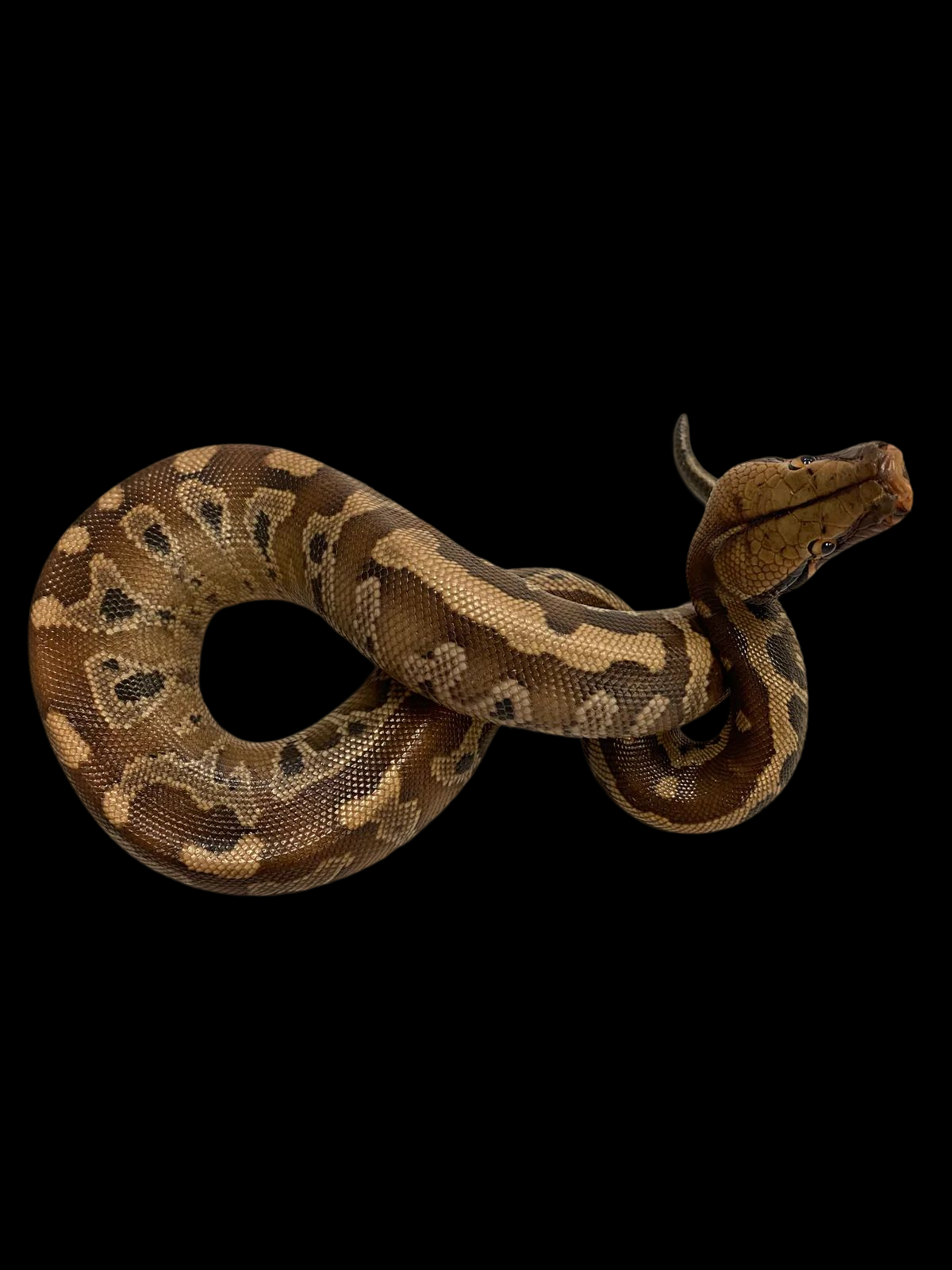Photo Disclaimer
Description
Blood Python (Normal)
Python brongersmai
Common Names: Blood Python, Brongersmai Python, Red Blood Python
Species Overview
-
Size: Adults typically reach 4–6 feet (1.2–1.8 m), with females often being heavier-bodied. Large individuals may surpass 7 feet, making this one of the heavier-bodied short-tailed pythons.
-
Appearance:
-
The normal, or wild-type, Blood Python displays a reddish-brown to deep maroon base colour, overlaid with irregular tan, gold, or olive blotches.
-
Juveniles often appear duller, gaining their characteristic deep red tones as they mature.
-
Bellies are usually lighter, with some speckling, and the head is broad and triangular, typical of the species.
-
-
Distribution: Native to Peninsular Malaysia, Sumatra, and surrounding islands.
-
Habitat: Blood Pythons favour swamps, marshlands, agricultural edges, and humid lowland forests, where they use dense vegetation and wet conditions for cover.
-
Behaviour: They are terrestrial ambush predators, relying on camouflage and explosive strength to capture rodents, birds, and other small prey.
Captive Care
-
Enclosure: Adults thrive in enclosures of 4 ft × 2 ft × 1.5–2 ft, prioritizing floor space over height. Provide secure hides, deep moisture-retentive substrate, and a large water dish for soaking.
-
Temperature & Humidity: Maintain a basking zone at 86–88°F (30–31°C) with a cooler side at 78–80°F (25–27°C). Humidity should remain around 60–70%, rising to 80% during shedding.
-
Diet: Juveniles feed on hopper rats or equivalent prey every 5–7 days; adults do best on medium to large rats every 10–14 days. Overfeeding should be avoided, as the species is prone to obesity.
-
Behaviour in Captivity: Captive-bred normals are generally hardy and reliable feeders, though they may be defensive when young or food-driven. With consistent handling and husbandry, they typically settle into steady captives.
-
Special Considerations: Blood Pythons do best in naturalistic, humid setups with deep substrate, allowing for burrowing and stable hydration.
Genetics Note
-
The Normal Blood Python is the wild-type form from which all morphs and designer lines are derived.
-
It carries no known genetic mutations but is genetically valuable when paired with morphs to produce heterozygous offspring.
-
Normals are also important for maintaining genetic diversity and robust bloodlines in breeding projects.
The Blood Python (Normal) is both the foundation of all Blood Python morphs and a striking snake in its own right, with deep reds and a heavy, impressive build that make it highly desirable among keepers.

